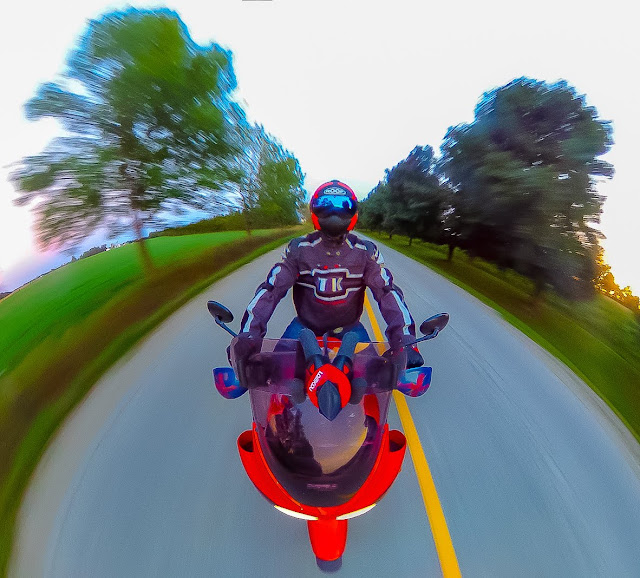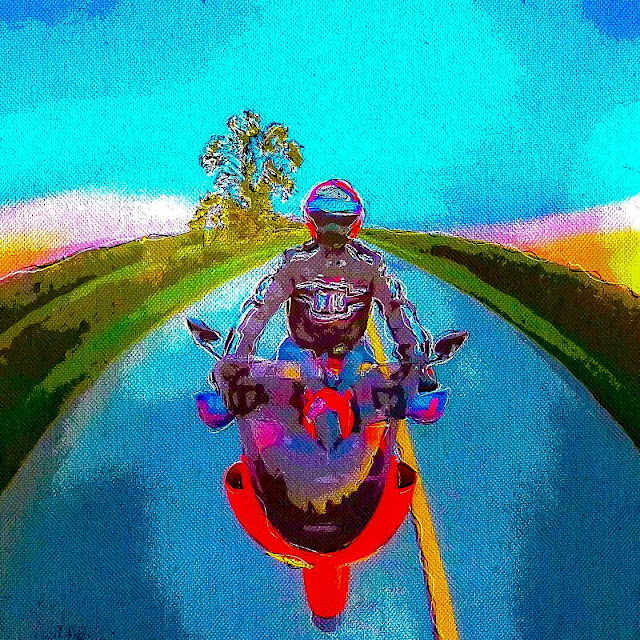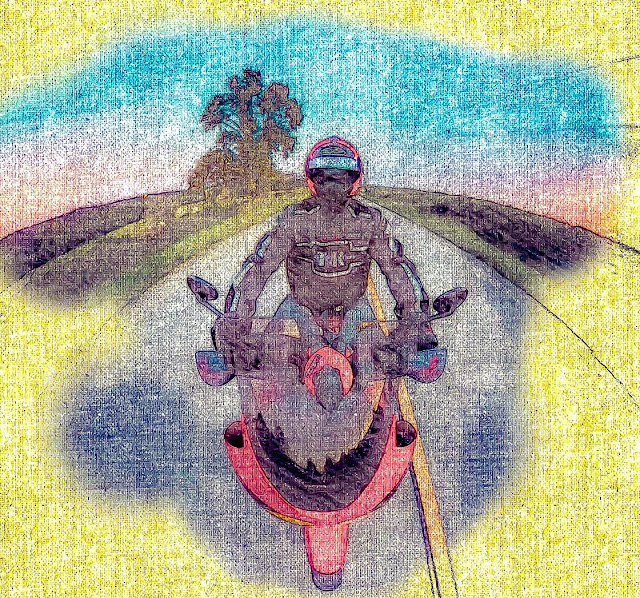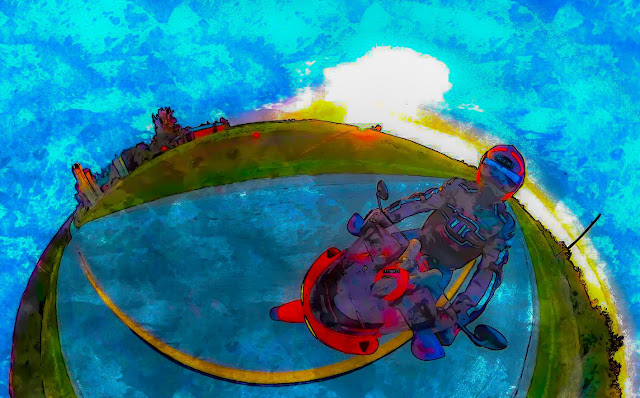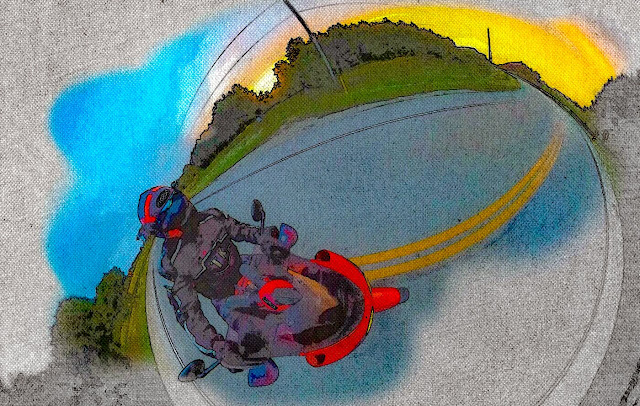Originally published pre-pandemic in March of 2019 on Dusty World: https://temkblog.blogspot.com/2019/03/stretched-thin.html
 I need to reflect my way out of a dark corner. Yesterday I got some surprise PD on students I have with profound hearing loss. The PD was quality. The person presenting it was not only very knowledgeable, but she was also wearing two cochlear implants, so could speak from experience. By the end of it we had a very tangible idea of just how difficult and exhausting it is for hearing impaired students to function in a standard classroom, and yet a standard classroom is where we expect them to thrive.
I need to reflect my way out of a dark corner. Yesterday I got some surprise PD on students I have with profound hearing loss. The PD was quality. The person presenting it was not only very knowledgeable, but she was also wearing two cochlear implants, so could speak from experience. By the end of it we had a very tangible idea of just how difficult and exhausting it is for hearing impaired students to function in a standard classroom, and yet a standard classroom is where we expect them to thrive.
How do we expect them to thrive? By depending on the teacher to differentiate instruction, use technology and modify their lesson delivery to reach those students. Why that? Because any other alternative is much more expensive and downloading onto teachers is the default approach to any problem from a cost-effectiveness point of view (that’s the dark corner talking).
Empathy is my superpower when it comes to teaching. It’s a reflex I can’t stop, but it’s also exhausting me. By the end of that PD I was emotional about the difficulties these HH students experience all day every day and wanted to do all I could to help, but I’m not sure how much of me there is left to do it.
In a capped-at-27 students open technology class where we are working hands on with 400° soldering irons, sharp edges and live electricity, I have two students who are hard of hearing to such a degree that we are legally required to address it. I have 9 students, or a third of the class, who have learning impairments ranging from autism to ADHD that I’m legally required to address individually. The entire class is also in the throes of puberty. As an open class it contains students who range from gifted/academic and on track to becoming engineers to essential students who are functionally illiterate. Some students are living in luxury and are about to take a three week March Break on holiday (I’m supposed to plan for that too), while others aren’t getting fed before coming to school in the morning. I’m supposed to engage all 27 of them equally and consistently no matter where they are using differentiation while also ensuring their safety. Feel overwhelmed yet? I do. And that’s just one class of three. The other two have similar expectations around size and diversity.

A long time ago now in Teacher’s College we did a day on assistive technology and I couldn’t help but think that this technology would help everyone learn more effectively regardless of where they were. One of the reasons I enjoy teaching technology is for how it can functionally improve us. People who use technology to waste time and distract have missed a golden opportunity in my eyes.
At our HH PD the instructor ended with this cartoon. It speaks to that feeling I had years ago at the assistive tech day. The sound-field system that I now have not only assists my HH students, but also my students who have signal processing problems with background noise. If everyone can hear better, everyone will learn better. It also saves my battered vocal cords, which is no bad thing. It begs the question, why we don’t have sound field systems in every classroom? But we all know the answer to that, don’t we.
In the PD it was also suggested that we have acoustically effective rooms by covering walls and floors with soft surfaces that don’t create hard, echoey soundscapes. It was suggested that we bring in carpets and wall hangings, but based on health and safety responses to other brought in furniture, I doubt that would be allowed. Having soft materials on the concrete blocks and industrial linoleum floors of our classroom would be great, but I doubt money exists for any of that. It sure would be nice to work in a typical office environment, but we’re not that lucky. Plastic floors, plastic chairs and cinder block walls are where learning happens in Ontario.
We were also encouraged to remove ambient noise as it has a deleterious effect on signal processing and requires everyone to be louder to overcome it. That increased volume wears out voices and ears and makes for a less effective learning environment. That’s why lawyers, bankers and politicians all have nice carpets and soft walls in their offices.
There is a lot of ambient noise in our computer technology shop. We happen to be next to the heat exchanger in my relatively new school,, so when the HVAC system spins up background noise thrumming out of the ceiling jumps by 15 decibels. The 30+ fan cooled PCs in our lab add to the din, as to the dozens of adolescents sitting at them. A typical student needs a 5-10 decibel volume bump to clearly understand instruction. Hard of hearing students need even more. How do we make quieter learning environments? By not building schools as cheaply as we can, but that isn’t going to stop. Well it is, because we’re just going to stop building schools.
So, rather than provide technology and acoustically healthy environments in reasonably sized classes for everyone, including HH students, to more effectively learn, the answer is to download the problem on teachers. At least then it can be said that we’re doing something about it. That’s assuming things stay as they are, but they won’t.
 All this is happening in an environment of anxious uncertainty. The general feeling is that Ontario education will be cut to the bone and what we’re expected to do will only become more absurd in the next few months. It isn’t just in education either. As the new Ontario cuts programs to support children with special needs, guess who will pick up the slack on that? Yep, the education system, and it’ll be expected to do it with less. Fortunately they have a free escape valve, just ask teachers to do more with less, probably for less.
All this is happening in an environment of anxious uncertainty. The general feeling is that Ontario education will be cut to the bone and what we’re expected to do will only become more absurd in the next few months. It isn’t just in education either. As the new Ontario cuts programs to support children with special needs, guess who will pick up the slack on that? Yep, the education system, and it’ll be expected to do it with less. Fortunately they have a free escape valve, just ask teachers to do more with less, probably for less.
There are numerous places we could find efficiencies in education in Ontario, but thanks to trickle down economics you can bet that the majority of those cuts will land on frontline classroom teachers and negatively impact student experience. Those higher up the food chain will make sure their jobs are secure. The Heinlein Starship Troopers part of me wishes we ran things like the mobile infantry: everyone drops, everyone is on the front line. Too many people find ways out of teaching and yet get paid more for it. In my efficient Ontario education system everyone keeps a toe in the classroom and teaches. No one gets to opt out into a support role with zero instructional responsibility.
I get a lot of satisfaction out of my job and have no wish to leave the classroom. Launching my students into meaningful careers in much-needed ICT roles from workplace to university streams isn’t easy but it is a real thrill. It’s important work for Canada’s future and I want to keep doing it. All I ask is that we be supported in that effort and not have the system punish us for its own shortcomings. What got me down about this PD was that it boiled down to yet another level of differentiation I’m expected to deliver with little or no support. That the system thinks this somehow resolves the problem is really aggravating; these kids deserve better.
I don’t only cater to easy to teach academics (though my classroom is capped the same way) and want to see my full spectrum of students find success, that includes special needs students like my HH kids. My goal is to maximize their learning and help them find their best selves. Because we’re working in ICT I hope this means they will find satisfying and challenging careers that will enable them to support themselves and their families in a very changeable future.
With all that in mind, I’m already stretched thin trying to teach with and around various special needs in a hands-on technology environment that is designed around thrift and the biggest caps in the province rather than effective learning. That we’re as good as we are now (and that’s in national competition) in spite of all that is great, but the thought of things only getting worse is wearing me down. If we’re going to up the ante to 35+ students and cut budgets so that we can pay for increased housing allowances and make new jobs at EQAO, I’m going to have to start putting the things down that I don’t get paid for in order to manage a punishing work load designed with generic production lines in mind.
Lowering my efficiency and not pushing us all to be our best in an emerging industry is the last thing I want to do, but needs must. That HH PD on Friday only underlined for me how complex and multifaceted what I do is. All I want to do is try and fulfill that difficult role as well as I possibly can, but I can’t do it if the system is intent on being less for less.
 If what’s got me down are the dark headlines and ominous future of Ontario education, then I’m falling into the old trap that J.K. warns of. What I should be doing is what I’ve always done, make best use of what I’ve got and try and reach as many students as I can. Thanks to Friday’s PD I now have some tech in my room that should help me do that. On Monday I’ll be speaking a bit softer but being heard better. I’ll deal with what happens later this year when it happens.
If what’s got me down are the dark headlines and ominous future of Ontario education, then I’m falling into the old trap that J.K. warns of. What I should be doing is what I’ve always done, make best use of what I’ve got and try and reach as many students as I can. Thanks to Friday’s PD I now have some tech in my room that should help me do that. On Monday I’ll be speaking a bit softer but being heard better. I’ll deal with what happens later this year when it happens.
from Blogger https://ift.tt/2C2iaLh
via IFTTT















